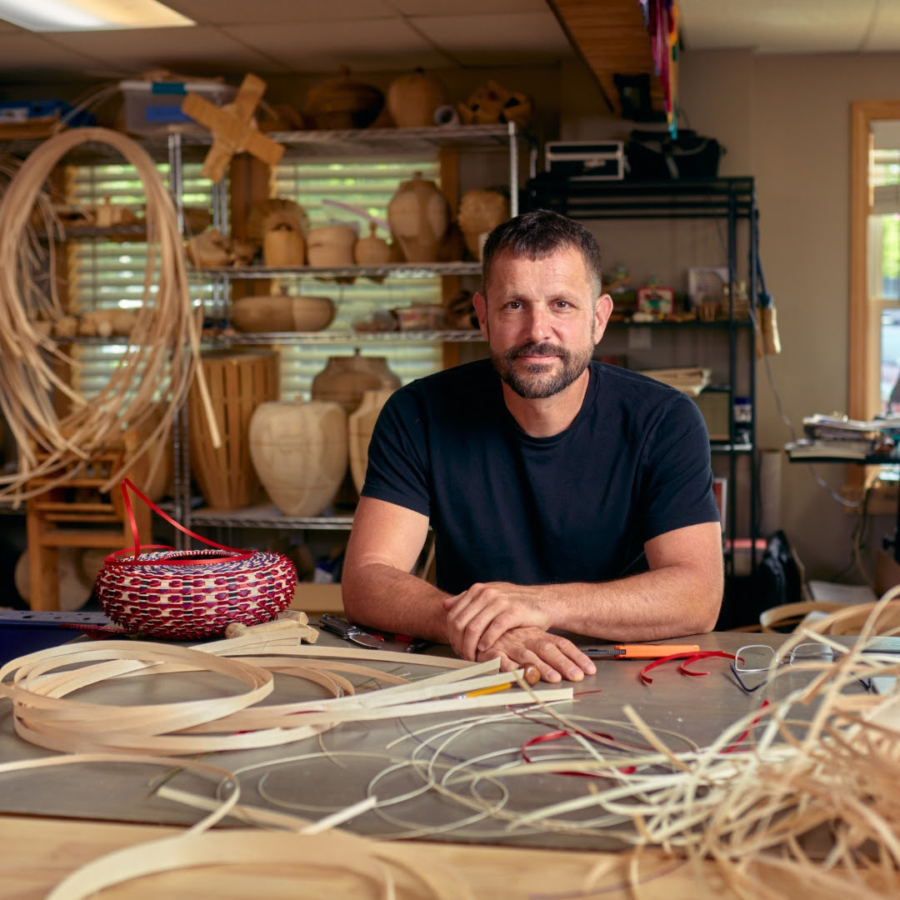March 7, 2008
Download as PDF
View on The Washington Post
An elephant appears on-screen, projected in stunningly crisp black-and-white. Near him on a bench sit six blind people, complete with dark glasses and white canes. One by one, they approach an animal they’ve heard about but cannot see, then explore it with their hands.
One blind man is delighted. “ This is nature,” he says.
Another approaches, then retreats, shaken, after only a few pats.
A third can’t stop talking, Catskill-style, as though the new experience matters less than how he can incorporate it into his established monologues.
Viewers of the footage, which went on view at Thursday’s opening of the 2008 Whitney Biennial, feel a bit like its protagonists. We’re instantly entranced by the quiet, solid nobility of the 35-minute work. But we’re also perplexed about just what we should think about it and how it fits into the other art and experiences we’ve known. One thing we’re sure of, however, is that we’ve had a powerful experience we’ll need to keep revisiting, at least in our mind’s eye.
Finding work like that is what any successful survey of contemporary art has always been about. Not a single lesson learned or a big-picture overview, but a collection of crucial moments and discoveries that we’ll carry around with us for years. The Whitney Museum of American Art’s 74th national survey, like most exhibitions of its prestige and scale, provides such moments. They may come from only 10 percent of its 260 or so objects, projections, installations and performances; only a dozen or so of its 81 artists may seem worth keeping tabs on. But you still leave knowing more good works of art than when you entered.
The notion that a biennial will explore a few coherent themes, or that it will take the moment’s pulse, is almost always a fiction. The “essence” of any art-world moment is usually imposed from outside, retrospectively, based on what a very few leaders turn out to have been up to. Most of what was really going on around them is all over the map and quickly forgotten.
There is plenty of work like that in this Whitney Biennial, as in every earlier edition. There are a slew of incoherent assemblages that might have felt fresh a decade ago. Also lots of slick reworkings of modernist abstraction and design: They may aim to comment on those precedents but really just revisit them nostalgically. Yet these works’ weaknesses don’t matter at all, and certainly won’t be remembered in a few years’ time. As at any moment in art, they’re just the background against which a few more important creations stand out.
Of the 13 artists I was struck by at the 2008 Whitney Biennial, three seem to me to have made work that may have the most staying power. These three may not be brand new in everything they’re doing, but their art registers strongly enough to have a good chance of lingering in a museum-goer’s mind.
* * *
After the twists and turns of Fast, there’s pleasure in the extreme simplicity of the premise behind a work by Mungo Thomson, a California native who splits his time between Los Angeles and Berlin. His “Coat Check Chimes” is what it says it is: The piece replaces all 1,200 hangers in the Whitney’s coat-check area with new ones designed by Thomson to ring like orchestral triangles.
Thanks to Thomson, an area of the museum consigned to service infrastructure has been turned into exhibition space, yet without making much change in its function. As the new hangers revolve on two tiers of motorized racks, or when attendants place and remove coats, a raucous but also lovely sound rings out from this normally dead zone in the museum. And that sound changes in interesting ways with the time of day and weather. The chimes, which come in 10 weights and tones, get more or less muffled by the number and kind of coats being checked. The Whitney has been turned inside out, almost like a newly removed sweater, so that what’s usually ignored now has a more immediate, instant presence than the stuff that you normally go there to see.
Surprisingly, that presence is visual as well as sonic. To make their sounds, Thomson’s hanger-chimes had to be immaculately machined from thick nickel-plated aluminum. Which means that, when assembled by their hundreds on the Whitney racks, they end up looking like a fancy piece of high-tech minimalist sculpture. Or they could be the ultimate example of modern design’s marriage of function and form. Although in this case the design has been so overdone and overbuilt that standard coat-hangers end up with jet-fighter looks.
Maybe most importantly, the piece also has a striking social presence. The museum’s normal division between the realm of its patrons (mostly well-off and often white) and of its service personnel (ill-paid and mostly black or Latino) gets broken down in “Coat Check Chimes.” Here, the laborers control the art while museum-goers have to linger around its edges.
Or maybe the social dynamic spotlighted in the piece is, unfortunately, the more normal one in a museum: The art seems designed for the wealthy taking their leisure; the normal Joes, hard at work in that art’s midst, see it as just another sign of an elite culture that’s keeping them down. One coat-check attendant made a face each time Thomson’s hangerchimes rang out — which means each time he made a move — though he said he wasn’t supposed to voice opinions on the art. “But what do you think I feel about it,” he said.



